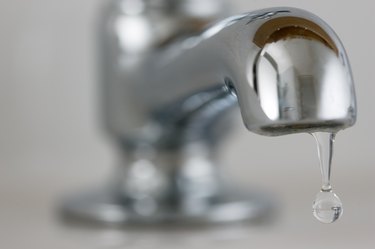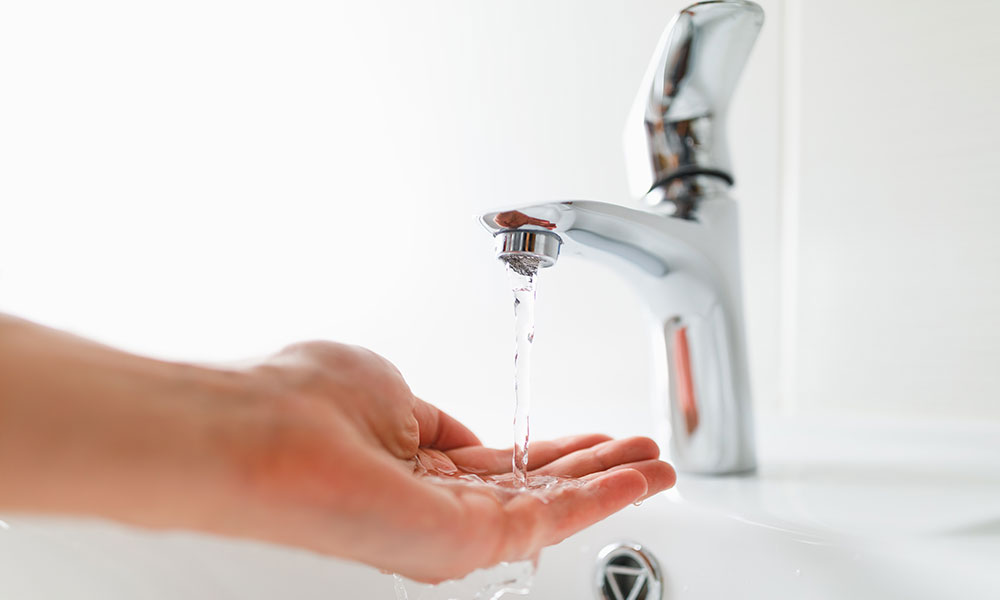How do you actually feel when it comes to 4 Ways to Troubleshoot Low Water Pressure?

Low water stress in your house can be a frustrating trouble, affecting every little thing from showering to cleaning meals. If you're experiencing weak water flow, there are several feasible reasons and options to explore. In this guide, we'll review typical factors for low water stress and useful actions to attend to the problem effectively.
Introduction to Low Water Pressure
Low tide pressure occurs when the circulation of water from your faucets, showers, and other fixtures is weak than typical. This can make day-to-day jobs a lot more tough and much less efficient. Comprehending the sources of low tide stress is critical to discovering the best solution.
Common Sources Of Low Water Pressure
Pipe Obstructions
With time, pipes can come to be obstructed with natural resource, sediment, or particles, restricting the circulation of water. This is a typical problem in older homes with galvanized steel pipelines.
Corrosion
Rust within pipes can result in leaks and lowered water pressure. Corrosion accumulation can constrict water flow, especially in aging plumbing systems.
Faulty Pressure Regulatory Authorities
Pressure regulatory authorities are accountable for keeping consistent water pressure in your home. If they malfunction, it can result in low tide pressure or uneven circulation throughout the house.
Metropolitan Water Issues
Sometimes, the problem lies outside your home. Local water system issues, such as main line leakages or maintenance work, can temporarily lower water pressure in your area.
How to Identify Low Tide Pressure
Inspecting Taps and Fixtures
Start by testing the water pressure at various faucets and components throughout your home. If the problem is separated to details locations, it may show localized problems.
Evaluating Pipes
Evaluate visible pipes for indications of leaks, deterioration, or clogs. Focus on any unusual noises, such as banging or rattling pipes, which can show issues within the plumbing system.
Consulting with a Plumber
If you're incapable to pinpoint the cause of low tide stress, consider employing a specialist plumber to perform a comprehensive inspection. They can determine underlying problems and suggest suitable solutions.
Do It Yourself Solutions to Take Care Of Low Tide Pressure
Cleaning Aerators and Showerheads
Natural resources can build up in aerators and showerheads, minimizing water circulation. Remove and cleanse these elements on a regular basis to enhance water stress.
Flushing Water Heater
Debris buildup in the water heater can limit flow and lower effectiveness. Purging the storage tank periodically helps remove debris and keep optimal performance.
Checking Stress Regulatory Authority
Make certain that the stress regulatory authority is working appropriately. Changing or changing the regulator can help recover appropriate water stress throughout your home.
Cleaning Clogs in Pipeline
For small clogs, attempt making use of a plumbing serpent or chemical drainpipe cleaner to clear obstructions in pipelines. Be cautious when using chemicals and follow security standards.
When to Call a Professional Plumber
If do it yourself initiatives fall short to deal with the concern or if you suspect significant plumbing problems, it's finest to seek aid from a licensed plumber. They have the know-how and devices to resolve intricate concerns securely and properly.
Safety Nets to Keep Water Pressure
Routine Maintenance
Schedule regular upkeep for your plumbing system to avoid issues such as corrosion, leakages, and blockages. Dealing with minor troubles early can assist avoid even more considerable repairs later.
Setting Up a Stress Booster
Think about installing a stress booster pump to enhance water stress in locations with constantly low flow. This can be specifically useful for multi-story homes or residential properties with high-demand fixtures.
Tracking Water Use
Bear in mind water usage behaviors and avoid overtaxing the plumbing system. Basic adjustments, such as staggering showers and laundry tons, can assist keep ample water stress.
Conclusion
Handling low water pressure can be aggravating, however determining the underlying causes and executing suitable services can bring back optimal flow throughout your home. Whether it's cleaning aerators, evaluating pipelines, or seeking advice from a plumber, taking positive actions can make certain a consistent supply of water for your daily needs.
HOW TO FIX LOW WATER PRESSURE IN YOUR HOUSE (EXPERT GUIDE)
The morning shower lacking any real pressure? Bathtub taking hours to fill? Or maybe you’re dissatisfied with the inadequate performance from your combi boiler?
Then you, like millions of others across the UK, might be experiencing low water pressure.
Fortunately, the good news is that you don’t have to continue living this way. The cause of low water pressure in the home is often quite simple, and you may not even require a plumber to fix the problem.
What causes low water pressure in the house?
If you are experiencing issues with water pressure throughout your home, then you may have one of the problems outlined below.
Most of these problems can be fixed quite easily, but for others, you may need to contact a plumber.
Obstructed Shutoff Valve
If you’ve just bought a new home or recently had building work conducted on your property, there is a chance that your water valves were not fully opened.
If the water valve is partially closed, then you may be restricting the amount of water entering your home. To fix this, simply ensure the valve is fully open.
If the valve appears fully open but you are still encountering reduced water pressure, then the valve may be broken. If this is the case, do not under any circumstances try to fix it without proper training.
Often found under your kitchen sink, a water valve will usually look like a bright yellow handle.
Again, if you believe the water valve is broken, contact a plumber immediately.
Leaks in Your Water Pipes
Leaks are the worst-case scenario when it comes to low water pressure.
If the water pipes are damaged, then this will cause low water pressure, as not all the water will make it to your taps.
After you’ve checked to see if the valve is fully open, you can conduct a leak check of your home. Now, this may seem scary, but it is actually quite simple.
Clogged Water Pipes
Clogged water pipes are one of the most common causes of low water pressure.
These clogs usually build-up when your home is supplied water via iron pipes. Iron is particularly vulnerable to rusting which can then break off and cause an obstruction within your system. You also face the problem of things like dirt, gravel or sand entering creating mineral deposits which further block water flowing from the mains water supply.
Unfortunately, if you suspect that clogged pipes may be restricting your water supply, then you will need to contact a plumber.
In this situation, you will either need to have your pipes removed and cleaned or in more severe cases, you could require a new set of water pipes.
Designer Taps
Designer taps look fantastic, but are they built to be efficient in your plumbing system? Modern taps are built for modern homes and they often have lower flow rates that are specifically designed for use within high-pressure systems.
Install a Water Pressure Booster Pump
If the issue is simply that the mains water pressure supply is too low, the simplest fix is to invest in a booster pump. Found in homes of all shapes and sizes, booster pumps are a relatively cheap option to add extra pressure to your home.
Designed to increase water pressure by passing water into the pump from your mains supply and then ejecting it into your home water system at a higher pressure, a booster pump is a truly simple and effective solution to increasing water pressure.
https://www.anchorpumps.com/blog/the-plumbers-guide-to-fixing-low-water-pressure/

HOW TO FIX LOW WATER PRESSURE IN YOUR HOUSE (EXPERT GUIDE)
The morning shower lacking any real pressure? Bathtub taking hours to fill? Or maybe you’re dissatisfied with the inadequate performance from your combi boiler?
Then you, like millions of others across the UK, might be experiencing low water pressure.
Fortunately, the good news is that you don’t have to continue living this way. The cause of low water pressure in the home is often quite simple, and you may not even require a plumber to fix the problem.
What causes low water pressure in the house?
If you are experiencing issues with water pressure throughout your home, then you may have one of the problems outlined below.
Most of these problems can be fixed quite easily, but for others, you may need to contact a plumber.
Obstructed Shutoff Valve
If you’ve just bought a new home or recently had building work conducted on your property, there is a chance that your water valves were not fully opened.
If the water valve is partially closed, then you may be restricting the amount of water entering your home. To fix this, simply ensure the valve is fully open.
If the valve appears fully open but you are still encountering reduced water pressure, then the valve may be broken. If this is the case, do not under any circumstances try to fix it without proper training.
Often found under your kitchen sink, a water valve will usually look like a bright yellow handle.
Again, if you believe the water valve is broken, contact a plumber immediately.
Leaks in Your Water Pipes
Leaks are the worst-case scenario when it comes to low water pressure.
If the water pipes are damaged, then this will cause low water pressure, as not all the water will make it to your taps.
After you’ve checked to see if the valve is fully open, you can conduct a leak check of your home. Now, this may seem scary, but it is actually quite simple.
Clogged Water Pipes
Clogged water pipes are one of the most common causes of low water pressure.
These clogs usually build-up when your home is supplied water via iron pipes. Iron is particularly vulnerable to rusting which can then break off and cause an obstruction within your system. You also face the problem of things like dirt, gravel or sand entering creating mineral deposits which further block water flowing from the mains water supply.
Unfortunately, if you suspect that clogged pipes may be restricting your water supply, then you will need to contact a plumber.
In this situation, you will either need to have your pipes removed and cleaned or in more severe cases, you could require a new set of water pipes.
Designer Taps
Designer taps look fantastic, but are they built to be efficient in your plumbing system? Modern taps are built for modern homes and they often have lower flow rates that are specifically designed for use within high-pressure systems.
Install a Water Pressure Booster Pump
If the issue is simply that the mains water pressure supply is too low, the simplest fix is to invest in a booster pump. Found in homes of all shapes and sizes, booster pumps are a relatively cheap option to add extra pressure to your home.
Designed to increase water pressure by passing water into the pump from your mains supply and then ejecting it into your home water system at a higher pressure, a booster pump is a truly simple and effective solution to increasing water pressure.
https://www.anchorpumps.com/blog/the-plumbers-guide-to-fixing-low-water-pressure/
I discovered that post on 10 Reasons for Low Water Pressure in Your House while doing a lookup on the search engines. Make sure you pause to distribute this entry if you liked it. Thanks a bunch for your time. Come back soon.
This Post